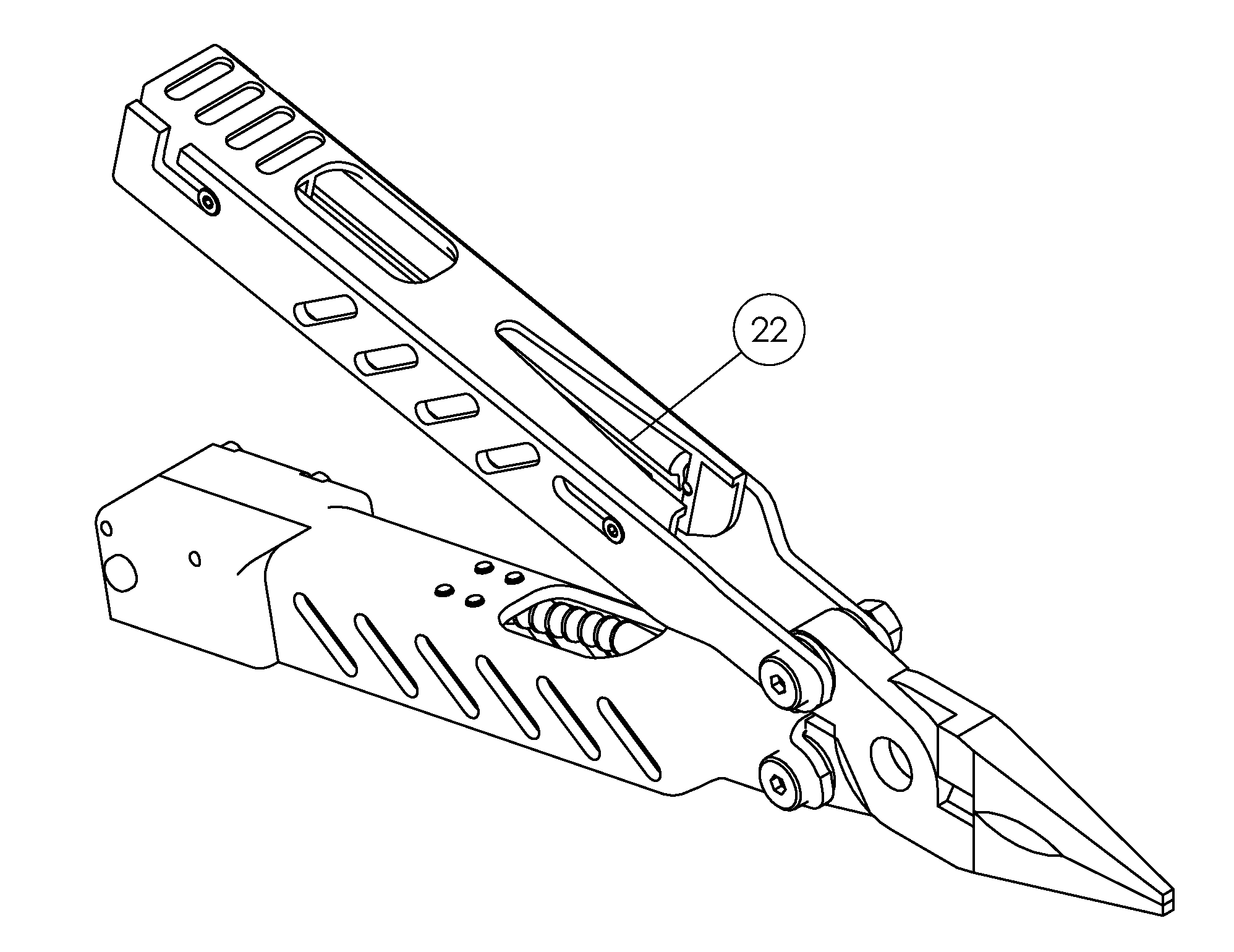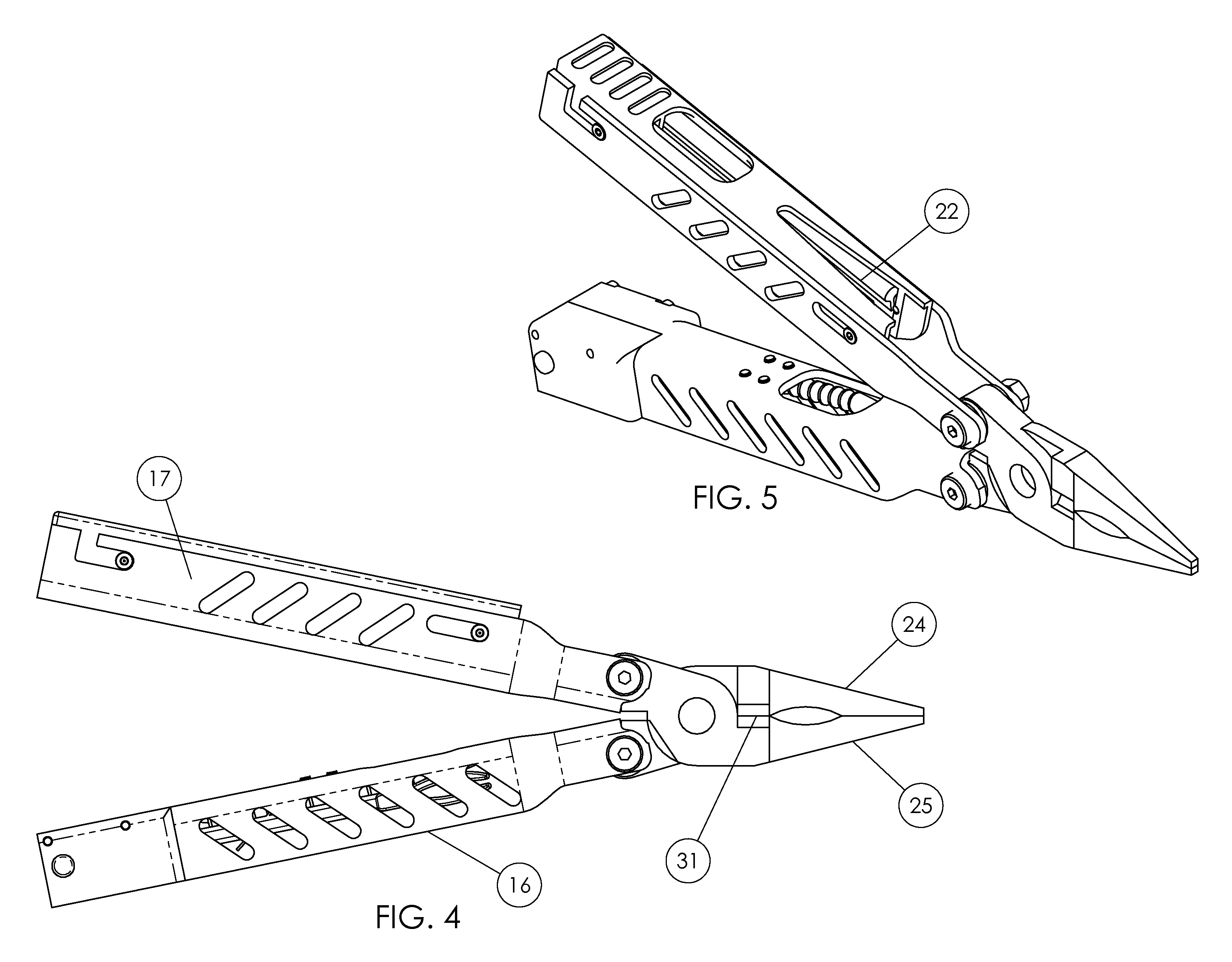Integrated tire repair multi tool with folding pliers
- Summary
- Abstract
- Description
- Claims
- Application Information
AI Technical Summary
Problems solved by technology
Method used
Image
Examples
first embodiment
[0052]An all-in-one tire repair tool for insertion of a plug into an injury in a tubeless tire. The tool comprises two nominally channel-shaped handles (16&17). Pliers comprising first and second plier halves (24&125) pivotally mounted to each other, with said plier halves being pivotally mounted to said first ends of said handles; and wherein said folding multi-tool is foldable between a closed, compact configuration in FIG. 1. and an opened, extended configuration for operating said pliers in FIG. 4. The pliers are used to remove the debris (nail, screw, etc) from the damaged tire.
[0053]The first of the handles, Handle, Tire Tools (16) contains nested within the open side a Rasp (18) which is pivotally mounted to the second end of said handle. The rasp, when in the deployed position in FIG. 7 is used to clean a puncture in a tire to ensure the plug, once inserted, remains in the tire. The Handle, Tire Tools also contains a fork (19) also pivotally mounted to the second end of the ...
embodiment
Preferred Embodiment
Removing the Debris:
[0057]The assembly is nominally in the closed position with the rasp and the fork in the stowed position (FIG. 1) To remove the debris from the tire, the user unfolds the handles (16&17) (FIG. 5) and uses the plier jaws (24&25) to grab and extract the debris.
Cleaning the Injury:
[0058]Once the debris is removed the user presses the Rasp release button (21) and rotates the rasp (18) into the deployed position. The user then refolds the handles into the compact position leaving the rasp deployed (FIG. 7). Next the user grasps the assembly by the pair of closed handles, puts the rasp in the tire injury and moves it in and out of the hole in the tire to clean the injury. Next the user opens the handles, presses the Rasp release button (21) and rotates the Rasp back into the stowed position. (FIG. 1)
Removing a Plug from the Handle:
[0059]The user slides the Tray, Tire Plug Holding (23) rearward which allows the Tray to pivot into an open position as ...
PUM
 Login to View More
Login to View More Abstract
Description
Claims
Application Information
 Login to View More
Login to View More - R&D
- Intellectual Property
- Life Sciences
- Materials
- Tech Scout
- Unparalleled Data Quality
- Higher Quality Content
- 60% Fewer Hallucinations
Browse by: Latest US Patents, China's latest patents, Technical Efficacy Thesaurus, Application Domain, Technology Topic, Popular Technical Reports.
© 2025 PatSnap. All rights reserved.Legal|Privacy policy|Modern Slavery Act Transparency Statement|Sitemap|About US| Contact US: help@patsnap.com



